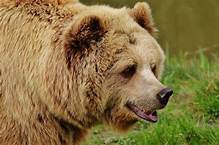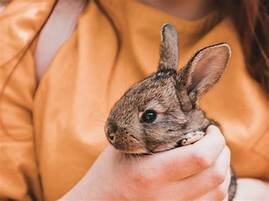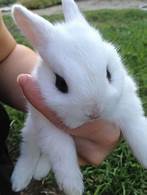Can I Have a Bear as a Pet?
Bears are fascinating creatures that have captured the imagination of humans for centuries. With their powerful builds, sharp claws, and distinctive fur, bears exude an aura of strength and majesty. While some people may dream of having a bear as a pet, it is essential to understand the challenges and responsibilities associated with keeping such a wild animal in captivity.

The Challenges of Keeping a Bear as a Pet
1. Size and Strength: Bears are large and powerful animals. Even a small bear can weigh several hundred pounds and possess enormous strength. Handling and caring for a bear safely requires specialized knowledge, experience, and facilities.
2. Diet and Nutrition: Bears have specific dietary needs that can be difficult to meet in captivity. Their diet consists of a variety of foods, including fruits, vegetables, nuts, insects, and small animals. Providing a balanced and nutritious diet for a bear requires careful planning and access to fresh, high-quality ingredients.
3. Environmental Requirements: Bears are adapted to live in natural habitats that provide ample space, shelter, and opportunities for exercise. Keeping a bear in captivity requires creating an environment that simulates its natural habitat as closely as possible. This includes providing sufficient space, proper housing, and enrichment activities to keep the bear mentally and physically stimulated.
The Dangers of Keeping a Bear as a Pet
1. Public Safety: Bears are unpredictable wild animals. Even a well-trained bear can exhibit aggressive behavior, especially if it feels threatened or stressed. Keeping a bear as a pet poses a significant risk to the public, particularly if the bear escapes or if visitors come into contact with it.
2. Animal Welfare: Bears are not domesticated animals and do not adapt well to captivity. Keeping a bear in an artificial environment can lead to physical and psychological problems, such as obesity, malnutrition, and behavioral issues. Bears may also suffer from stress, anxiety, and boredom due to the lack of natural stimuli and social interaction.
3. Legal Implications: In many jurisdictions, it is illegal to keep a bear as a pet. Local and state laws often prohibit the possession of wild animals, and even where it is legal, strict regulations and permits are typically required. Violating these laws can result in fines, imprisonment, and the confiscation of the bear.
Alternatives to Keeping a Bear as a Pet
If you are fascinated by bears and want to learn more about them, there are several ways to do so without keeping one as a pet. Here are some alternatives:
1. Visit a Zoo or Wildlife Sanctuary: Zoos and wildlife sanctuaries provide a safe and controlled environment where you can observe bears and learn about their behavior and ecology. This is an excellent way to appreciate the beauty and majesty of these animals without the risks and challenges of keeping one as a pet.
2. Support Bear Conservation Organizations: You can contribute to bear conservation efforts by supporting organizations that work to protect bear habitats and promote responsible coexistence between humans and bears. Your donations and advocacy can help make a difference in ensuring the survival of these magnificent creatures in the wild.
3. Learn About Bears Through Books, Documentaries, and Online Resources: There is a wealth of information available about bears in books, documentaries, and online resources. By educating yourself about bear behavior, ecology, and conservation, you can gain a deeper appreciation for these animals and their role in the natural world.
In conclusion, while bears may be fascinating creatures, they are not suitable pets. Keeping a bear in captivity poses significant challenges, dangers, and ethical concerns. Instead of keeping a bear as a pet, consider visiting a zoo or wildlife sanctuary, supporting bear conservation organizations, and learning about bears through educational resources. These alternatives allow you to appreciate bears from a safe distance while promoting their well-being and conservation.
Declaration: All article resources on this website, unless otherwise specified or labeled, are collected from online resources. If the content on this website infringes on the legitimate rights and interests of the original author, you can contact this website to delete it.






